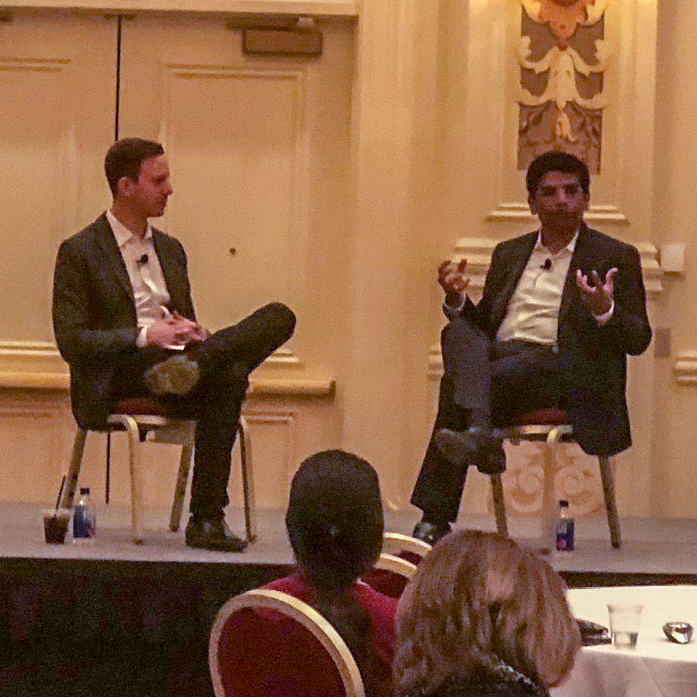What L’Oréal’s venture into A.I.-powered recruitment technology means for TA leaders everywhere

The signs are clear. A.I.-powered recruitment technologies are rapidly proving themselves to be very effective tools in the Talent Acquisition (TA) space and if you haven’t gotten yourself acquainted with them, you must now.
In what is becoming an annual pilgrimage, I was at the HR Tech conference in Las Vegas again this year checking out the latest in recruitment and a session involving cosmetics giant L’Oréal and A.I.-powered chat bot Mya really hit home for me about the use of the technology.
It is great to see that A.I. is still attracting huge interest in the US as this vindicates our decision to run our entire ATC conference earlier this year around this theme. However, what interests me more is how the conversations on A.I. are already starting to shift.
It is no longer a question whether A.I. can help recruiters become more efficient, the numbers provided by L’Oréal has shown that it does (the numbers below), but the conversations are now around how we can maximise the ROI from using this technology.

The biggest roadblock for L’Oréal when implementing Mya was deciding what questions to ask candidates and how can they get accurate feedback from them, given most of these candidates are invariably going to be rejected for the roles they are applying for.
Also, as a B2C organisation, most of their candidates are also customers and that made it an even more delicate process. In the UK, they did some research by cross correlating 250K candidates on their ATS to their sales database and found that 17 percent were on both. It might be only 17 percent you say but they accounted for $2 million pounds in sales. That’s massive.
So to overcome this, the company went through a detailed analysis of the candidate experience process involving everyone including recruiters and store managers. They also decided to roll this out in two of their most stable markets first – US and UK, to test their stakeholders’ appetite this technology.
According to Niilesh Bhoite, L’Oréal’s Chief Digital Officer, initial reactions from their recruiters were very positive. Mya was able to remove a lot of the tedious work and helped speed up the processing time for applications. Feedback from candidates were also positive and most expressed satisfaction at the quick turnaround time and value of information provided.
No recruiters were replaced in the process either. Mya was also able to direct candidates to the most suitable positions for them. These information are recorded in the ATS so recruiters were able to use this information in speaking with candidates.
Moving forwards, L’Oréal is looking at rolling out this technology to 100 countries in multiple languages to further help their recruiters maximise their productivity and provide candidates (also their customers) a consistently great job application process around the world.
It amazes me the speed at which things are developing in the A.I. world and we are now starting to see real-life case studies of how these recruitment technologies can be implemented and scaled successfully.
In addition, this is not restricted to just chat bots but we are seeing other A.I.-powered technologies such as Hiretual making great progress and shifting the conversations rapidly.
The next stage of A.I. evolution is happening right now and if you are not already onto these technologies, you should really start checking them out before your business lose further ground.
And as mentioned earlier, here are the L’Oréal numbers:
- L’Oréal receives two million applications each year for 4,000 positions;
- They employ 140 recruiters worldwide;
- Since implementing Mya, L’Oréal reduced candidate application processing time by 20 minutes per application in the UK;
- That’s equivalent to 45 days saved in total, which were then spent on improving candidate engagement;
- The technology was also able to remove gender biases during screening, which meant L’Oréal is now seeing a 50/50 gender diversity during the application process.
Cover image: Shutterstock
Trying to figure how to optimise the ROI from your Contingent Workforce model? Join us at the Contingent Workforce Workshop 2018 in Melbourne or Sydney to learn the skills, models and case studies you need to solve this challenge!

Related articles
Leave a Reply
Sign up to our newsletter
Get a weekly digest on the latest in Talent Acquisition.
Deliver this goodness to my inbox!


